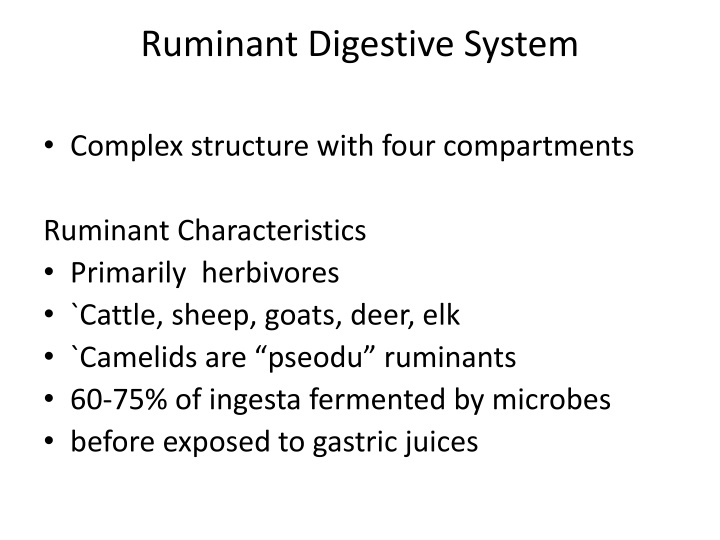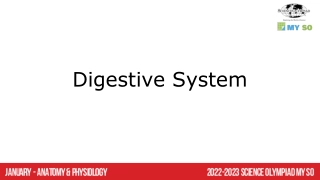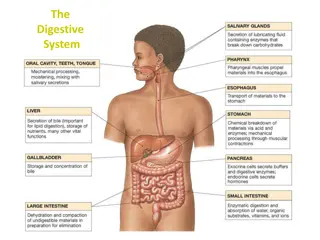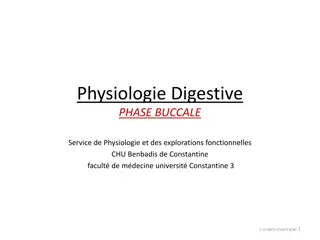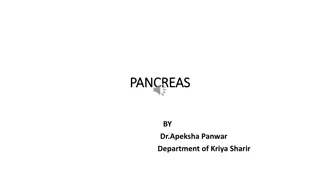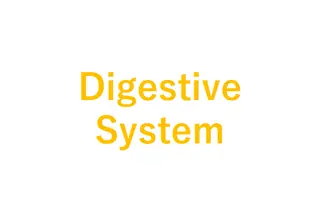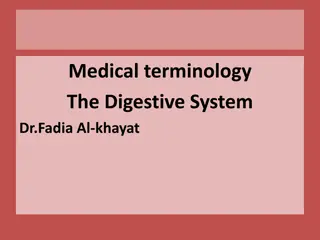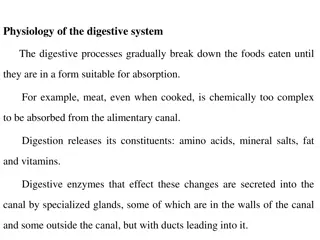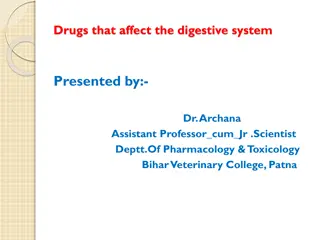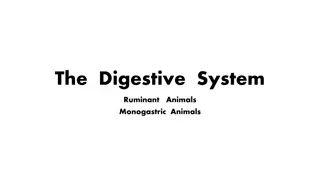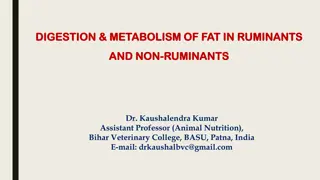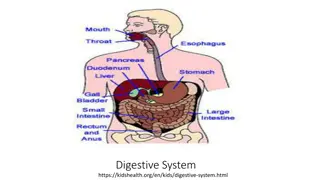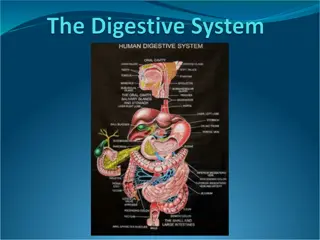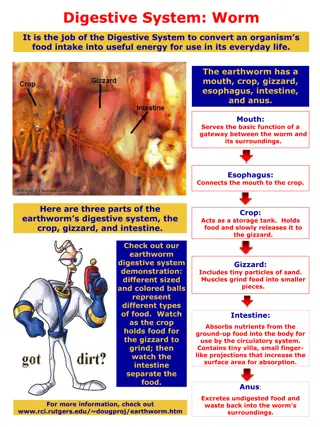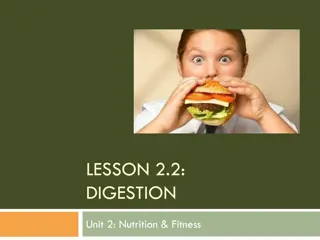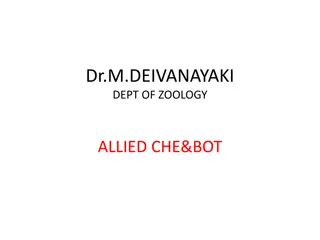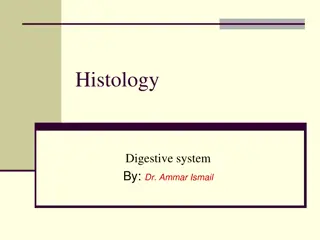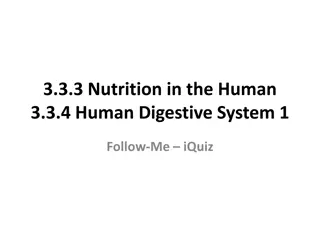Ruminant Digestive System
Ruminants, like cattle, sheep, and goats, possess a complex four-compartment digestive system geared towards herbivory. The system involves stages from mouth to abomasum, each serving unique roles in digestion, fermentation, and nutrient absorption. The rumen, omasum, and abomasum play critical functions in breaking down fibrous feeds, synthesizing nutrients, and absorbing water. Understanding the intricacies of the ruminant digestive system is vital for optimizing animal health and productivity.
Download Presentation

Please find below an Image/Link to download the presentation.
The content on the website is provided AS IS for your information and personal use only. It may not be sold, licensed, or shared on other websites without obtaining consent from the author.If you encounter any issues during the download, it is possible that the publisher has removed the file from their server.
You are allowed to download the files provided on this website for personal or commercial use, subject to the condition that they are used lawfully. All files are the property of their respective owners.
The content on the website is provided AS IS for your information and personal use only. It may not be sold, licensed, or shared on other websites without obtaining consent from the author.
E N D
Presentation Transcript
Ruminant Digestive System Complex structure with four compartments Ruminant Characteristics Primarily herbivores `Cattle, sheep, goats, deer, elk `Camelids are pseodu ruminants 60-75% of ingesta fermented by microbes before exposed to gastric juices
Mouth Tongue `Used more by cattle and goats (also use lips) Teeth `No upper incisors `Used more by sheep (use lips to sort feed) Saliva `Continual production `Cattle: 12 gal/d vs Sheep: 2 gal/d `No enzymes; High pH
Stomach compartments Reticulum Rumen Omasum Abomasum A higher proportion of a ruminant s digestive system is stomach
Reticulum characteristics Located next to heart Honeycomb appearance `Catches metal and hardware Pathways `Esophagus `Rumen `Omasum No enzymes secreted i.e. aglandular
Rumen Characteristics Left side of abdomen/ median plane Papillae lining Muscular pillars Fermentation vat `Primarily anaerobic `Some aerobic microbes Not functional at birth Aglandular
Rumen Functions Storage Soaking Physical mixing and breakdown Fermentation `Synthesizes some vitamins `Synthesizes Amino Acids and protein `Breaks down fibrous feeds into VFAs
Rumen Development 48 -100 liters of liquid `Larger in cows on a forage diet `Forage-fed calves have larger rumens 15-21% of mature cow weight is rumen contents
Omasum Manyplies No enzymes from walls Function `Reduce particle size `Absorb some water
Abomasum True stomach that secretes enzymes from walls Glandular stomach like monogastric fundic region `HCL, Mucin `Pepsinogen, Rennin and Lipase
Small and Large Intestine Same SI sections `Duodenum, Jejunum and Ilium Same LI sections `Cecum, Colon and Rectum
